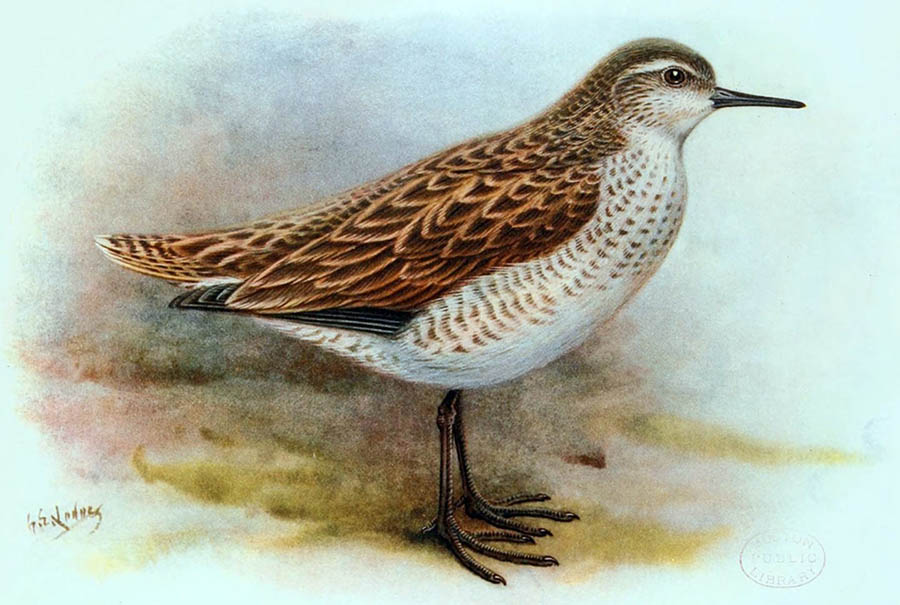Prosobonia sauli: Researchers Discover Now Extinct Species of Polynesian Sandpiper

A new species of sandpiper has been identified from multiple Holocene fossil bones collected several decades ago on Henderson Island, an uninhabited island in the South Pacific Ocean.
The newly-described species of sandpiper is scientifically named Prosobonia sauli after Cook Islands-based ornithologist and conservationist Edward K. Saul. The bird’s common name is the Henderson sandpiper.
The fossilized bones of the bird were collected from caves and overhangs on Henderson Island in 1991 and 1992 during the Sir Peter Scott Commemorative Expedition to the Pitcairn Islands.
The Henderson sandpiper is the fifth known species of Polynesian sandpiper. All but one of the species, the endangered Tuamotu sandpiper (Prosobonia parvirostris), are extinct.
“We think Prosobonia sauli probably went extinct soon after humans arrived on Henderson Island, which archaeologists estimate happened no earlier than the eleventh century,” said lead author Dr. Vanesa De Pietri, curator of natural history at the Canterbury Museum.
“It’s possible these humans brought with them the Polynesian rat, which Polynesian sandpiper populations are very vulnerable to.”
Compared to the Tuamotu sandpiper, the Henderson sandpiper had longer legs and a wider, straighter bill, indicating how it foraged for food.
It probably adapted to the habitats available on Henderson Island, which are different to those on other islands where Polynesian sandpipers were found.
“We found that Polynesian sandpipers are early-diverging members of a group that includes calidrine sandpipers and turnstones,” Dr. De Pietri said.
“They are unlike other sandpipers in that they are restricted to islands of the Pacific and do not migrate.”
“Henderson Island is home to a number of unique species, a handful of which are landbirds like the Henderson sandpiper,” said co-author Dr. Paul Scofield, senior curator of natural history at the Canterbury Museum.
“The island is really quite remarkable because every landbird species that lives there, or that we know used to live there, is not found anywhere else.”
“The study shows the need to protect the one remaining Polynesian sandpiper species, the Tuamotu sandpiper,” Dr. De Pietri said.
“We know that just a few centuries ago there were at least five Polynesian sandpiper species scattered around the Pacific.”
“Now there’s only one, and its numbers are declining, so we need to ensure we look after the remaining populations.”
The discovery is described in a paper published in the Zoological Journal of the Linnean Society.
_____
Vanesa L. De Pietri et al. A new extinct species of Polynesian sandpiper (Charadriiformes: Scolopacidae: Prosobonia) from Henderson Island, Pitcairn Group, and the phylogenetic relationships of Prosobonia. Zoological Journal of the Linnean Society, published online November 7, 2020; doi: 10.1093/zoolinnean/zlaa115
Source: www.sci-news.com/








